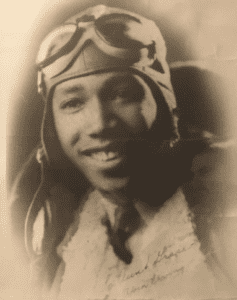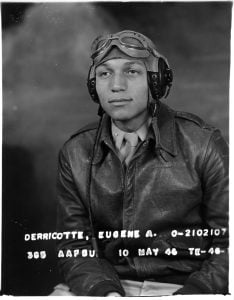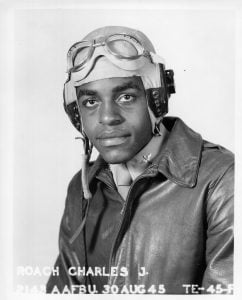 Roscoe DuBois Draper, flight instructor
Roscoe DuBois Draper, flight instructor
May 14, 1919 –
Williams became one of a handful of “triple-rated” Tuskegee Airmen. He earned all three wings—in navigation, as a bombardier and as a pilot—between 1943 and 1945. “I still have them, and I can wear them,” he says.
Born in Haverford, PA on May 14, 1919, Roscoe Draper grew up in Haverford and Bryn Mawr Pennsylvania. He graduated with honors from Haverford High School and continued his education at the Hampton Institute (later became Hampton University). After enrolling in the civil pilot training program in 1939, Roscoe received his Private Pilot license in 1940.
Draper was one of two men selected for the secondary course at the Tuskegee Institute (later became Tuskegee University) and completed his pilot training in 1942. He was one of the first ten men of color selected to serve as flight instructor for the Army Air Corps “Tuskegee Experiment”. He taught Army Air Corps cadets in the primary phase of their flight training at Moton Field, Tuskegee, AL (from 1942 to 1945), he was nicknamed “Coach” by his flight students because it described his teaching style.
Draper was mentored by another aviation legend, “Chief” Charles Alfred Anderson (1907-1996) who was also from the Philadelphia area. Together, they trained the famed Tuskegee Airmen who went on to compile their own impressive list of accomplishments. Roscoe was affectionately given the nickname “Coach” by his flight students because it described his teaching style.
The first class at Tuskegee began with 13 participants in July 1941. Five completed training in March 1942. Through 1946, almost 1,000 black pilots graduated at TAAF. Of them, 450 served overseas in the 99th Pursuit Squadron (later the 99th Fighter Squadron) and the 332nd Fighter Group. The 99th Fighter Squadron flew P-40 Warhawk aircraft in combat in North Africa, Sicily and Italy from April 1943 to July 1944, when they were transferred to the 332nd Fighter Group. “Guys we taught came back from the war and had more experience than we had,” Draper says.
Draper also served on the academic board for the Tuskegee Institute and was honorably discharged in November 1945.
Draper later worked for the US Postal Service and the FAA in several capacities, including Pilot Examiner and Accident Investigator. Among his many airplane ratings, Draper waited until he turned 60 before he earned his helicopter rating. “I was born to hover,” he says. “When you’re hovering, you have to do almost nothing—and I can do almost nothing better than anyone I know.”
Starting in 1970, Draper worked for the Federal Aviation Administration as a pilot examiner and an accident investigator. As an instructor, he mostly flew out of Old Star Airport in Langhorne, acreage now occupied by the Oxford Valley Mall.
Sources:
Greater Philadelphia Chapter of the Tuskegee Airmen
Patch.com
Roscoe Draper Chapter
The Press Group




